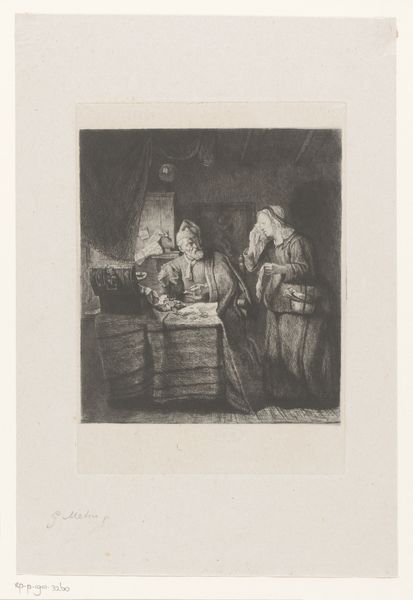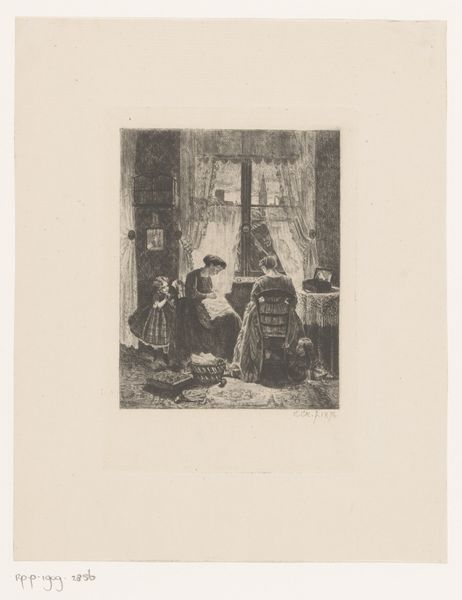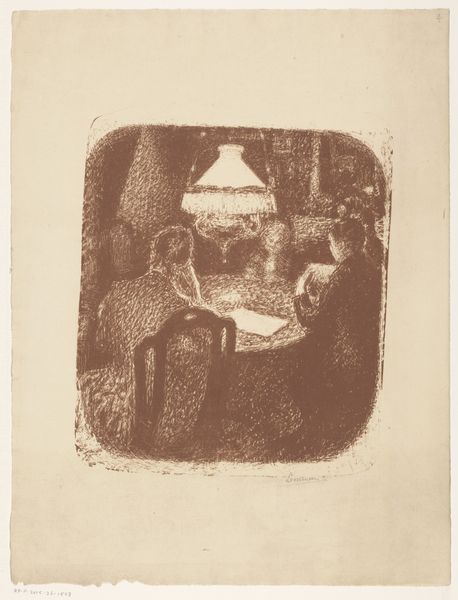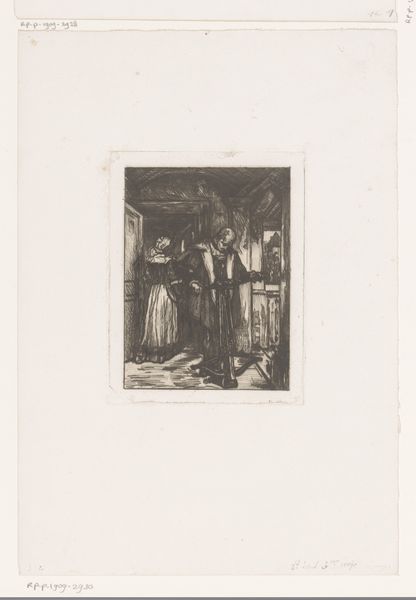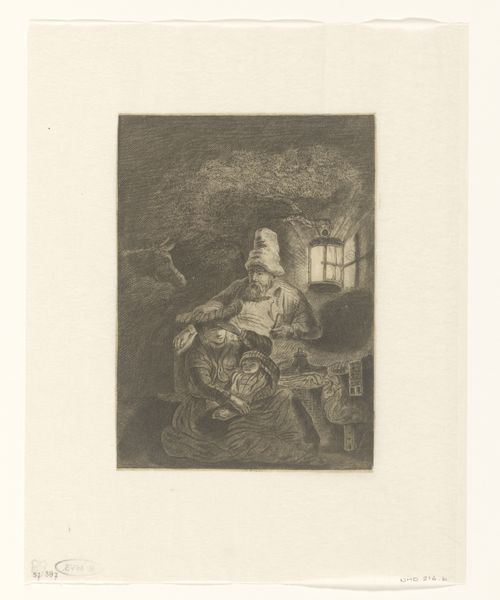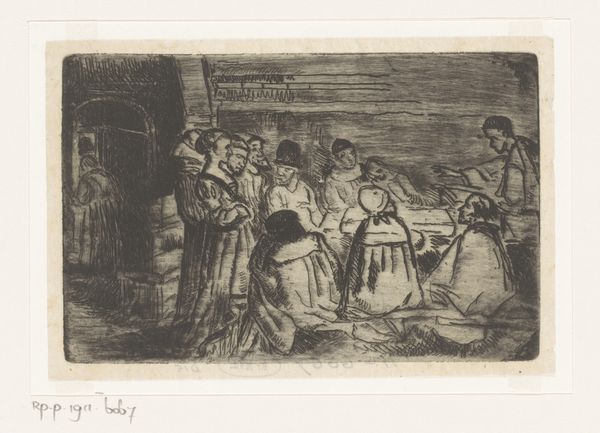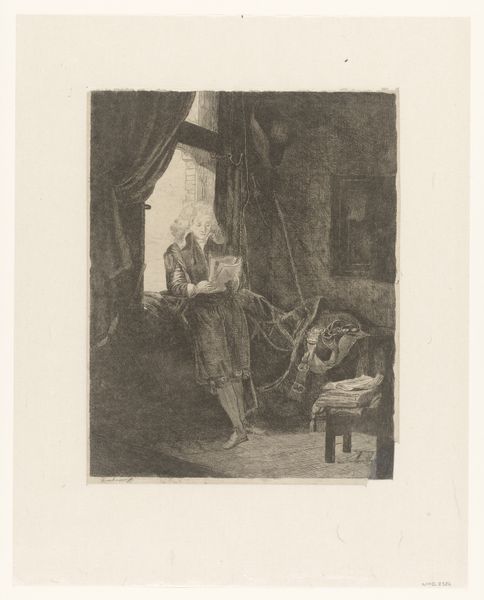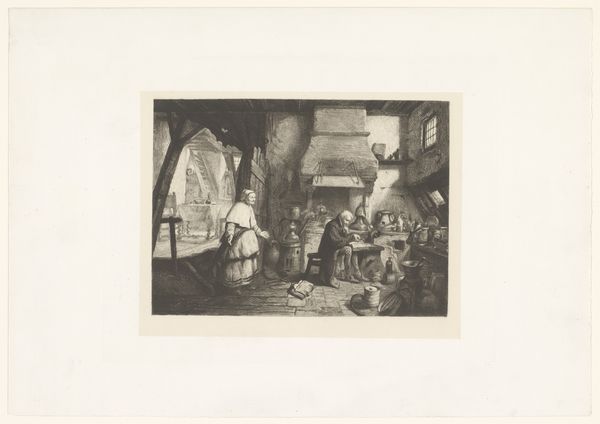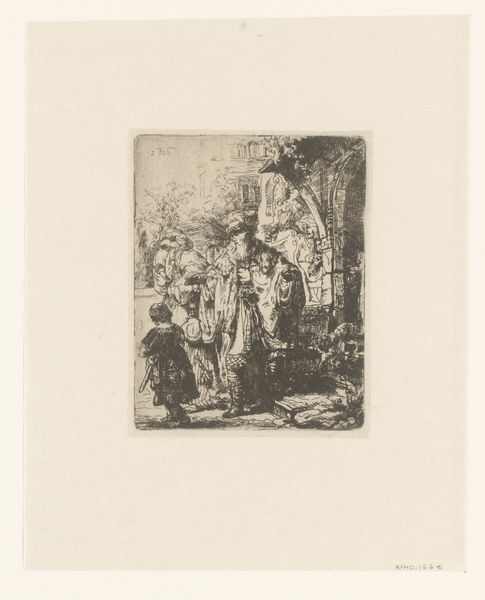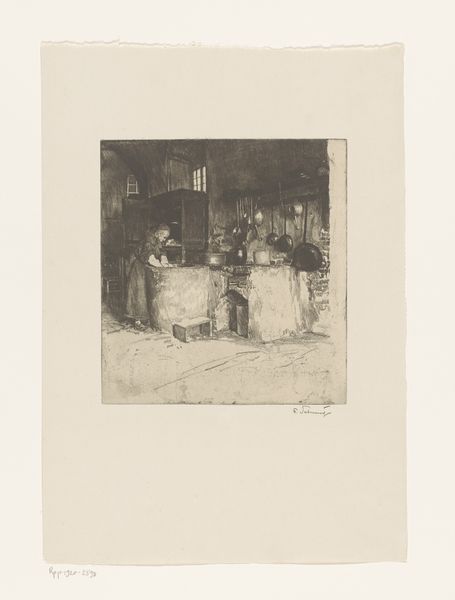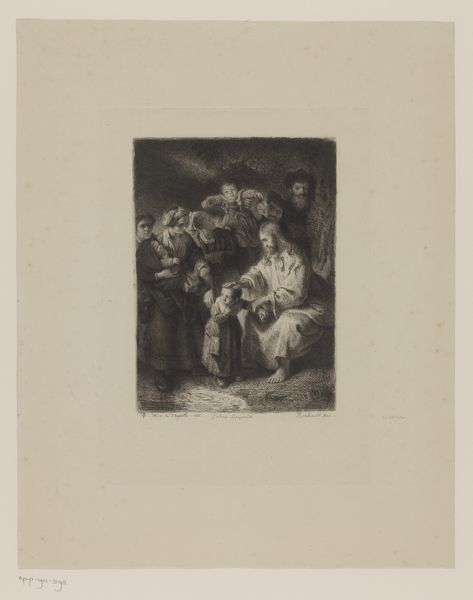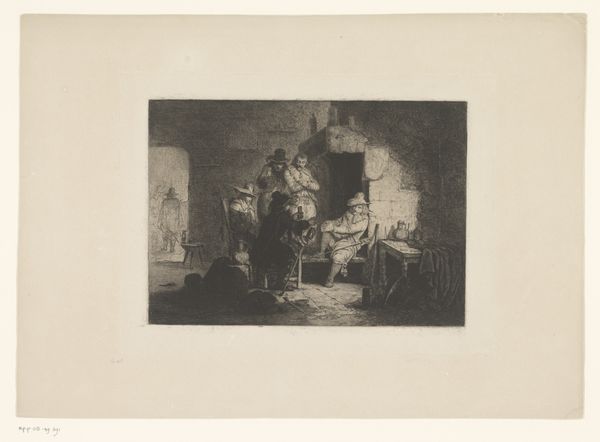
Dimensions: height 217 mm, width 176 mm
Copyright: Rijks Museum: Open Domain
Léopold Flameng created this ‘Stilleven’ using etching, a printmaking technique with a rich history. It's a still life that comes to life through the intricate process of its making. In etching, the artist covers a metal plate with a waxy, acid-resistant ground. They then draw into this ground, exposing the metal. When the plate is immersed in acid, the drawn lines are etched into the metal. This plate is then inked, and the surface wiped clean, leaving ink only in the etched grooves. Finally, it’s pressed onto paper, transferring the image. The beauty of etching lies in its capacity to capture fine detail and subtle tonal gradations, offering a unique texture and depth, achieved through laborious work. Consider the labor that went into preparing the plate, creating the drawing, and the physical effort of printing. Prints like this made art more accessible, fitting into a growing consumer culture. Appreciating the work and skill involved in the etching process allows us to see it not just as a picture, but as a product of human ingenuity and effort.
Comments
No comments
Be the first to comment and join the conversation on the ultimate creative platform.
